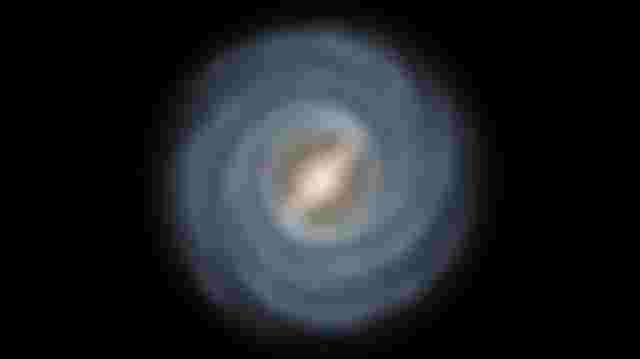Galaxies are among the most widely investigated celestial bodies in the cosmos. In this article, a comparison between spiral galaxies and elliptical galaxies will be discussed. To have a deeper understanding of spiral galaxies, the Milky Way, our own galaxy could be looked into and investigated.
Milky Way’s structure can be thought of as being 100,000 light-years in diameter, with billions of stars within it which are bound together by mutual gravitational attraction. At the center of it is a black hole that is responsible for the spinning motion that it has been doing for the past 13.51 billion years. The Milky Way is known to be as old as the universe itself.

A Close Look At Our Own Milky Way
For the moment, it is strongly speculated that the milky way began as a spherical gas cloud that got conceived as it collapsed towards its center. Such a kind of event is referred to as a protogalaxy. Over the course of time, 2 major physical structural components appeared: a very massive spherical halo and later still, a dense bright disk. The current appearance of the milky way is due to the near 14 billion-year evolution of the spinning and rotating motion of the galaxy.
Upon deeper observations, Milky Way can be further classified as a “barred spiral galaxy” because it has a bar-like appearance at its center before having spiral-shaped arms around it. Scientists declare that nearly half of all spiral galaxies are actually barred spiral ones. Both the motions of the stars and interstellar gas that comprise a barred spiral galaxy are greatly affected by the bar at the middle of it. Relative to the entire lifespans of most galaxies, the bars in them are deemed temporary averaging only at around 2 billion years.
Scientists estimate that The Milky Way could last for 4.5 billion longer years more before it collides with Andromeda – the nearest known galaxy. When that catastrophic event finally takes place, it could last for an entire 2 million years, which could result in the birth of another galaxy, or would transform either galaxy into an entirely different form. By then, it is highly doubtful if life could still exist.
Do You Know What’s The Biggest Known Galaxy?
Another classification of galaxies is the elliptical galaxies. They can be understood by looking into the galaxy named “IC 1101” which is known as the largest known galaxy. It has a very massive halo that extends up to 2 million light-years which are comprised of approximately 100 trillion stars. Discovered in 1790, IC 1101 is estimated to be 50 times bigger than our own Milky Way. Because of its very far distance which is 1.04 billion light-years from Earth, no clear information pertaining to its actual age is established yet.

Further classified as a supergiant lenticular, it is hailed as the brightest galaxy in the Abell 2029 galaxy cluster. The morphology or shaping pattern of IC 1101 is still a huge issue for debate among cosmologists because its flat-disc appearance is only viewable on earth, and cannot be tested otherwise for the time being. Unlike closer galaxies which can be observed by telescopes and by analyzing the light patterns that radiate from them, the imaging tests derived from simply viewing IC 1101 from the surface of our planet are still very vague and insufficient.
Just like other massive galaxies, IC 1101 is known to be replete with metal-rich stars, which means they are stars with high metallic element content. Such a finding can be figured out by observing the light emissions that emanate from them. These starts, cosmologists believe could be 7 years older than our own sun. This is evidenced by the golden-yellow colors of those stars, in contrast to our sun which is just plain bright yellow.
The 2 Galaxies In Relevance To The Hubble Sequence
In connection to the Hubble Sequence, the 2 aforementioned galaxies can play huge roles in furthering the field of cosmology. Because IC 1101 belongs to the elliptical category and can be further classified as lenticular, the complexities that can be understood out of it can bring about a much deeper understanding of galaxies that are yet to be understood or discovered. Also, the fact that it is more than a billion light-years from Earth makes it a very interesting piece of celestial object to study. By understanding IC 1101, objects that are very far like Quasars could be better understood.
The Hubble Sequence has been the ultimate basis for scientists these days to quantify the presence and structure of galaxies. By studying very far objects like IC 1101, a newer, better system might get established in the future too. The importance of understanding The Milky Way to the Hubble Sequence is without a doubt second to none.

It is where we currently live and will live for the next thousands or millions of years, it that can still be possible. By understanding the behavior, composition, and possible future evolution of our own galaxy, we could have greater hopes of propagating human life for the next eons of celestial generations to come.



I used to be so addicted to all of the things concerning the universe and astronomical bodies. This is an interesting read that made me go back to those days. I wonder though, is there other set of mankind in that ICC1101?
Ahhh, it is so fun reading this, felt like I am that inquisitive young girl back then.